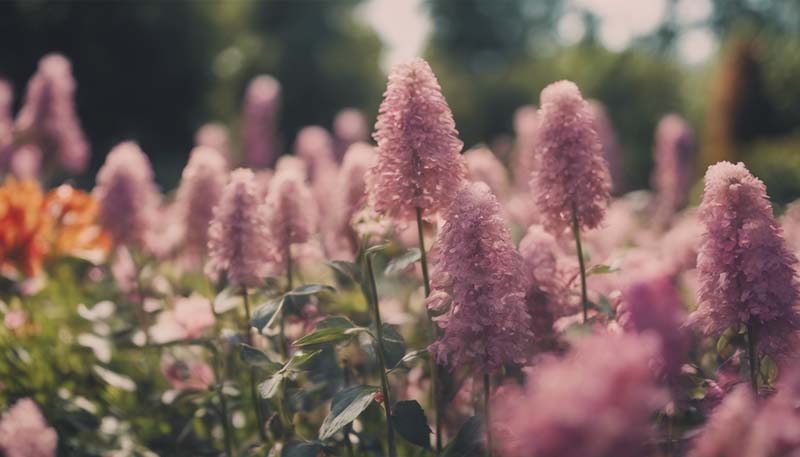Seasonal Flower Color Schemes: How to Create Harmony in Your Garden
Arrangements | 2024-05-01
Creating a cohesive and aesthetically pleasing garden design often starts with a well-thought-out color scheme. One approach to designing your garden\'s color palette is to use seasonal flower color schemes. This method not only brings harmony to your garden but also allows you to enjoy a variety of colors and flowers throughout the year. In this article, we\'ll explore how to create harmony in your garden using seasonal flower color schemes.
Introduction to Seasonal Flower Color Schemes
A seasonal flower color scheme is a garden design strategy that takes into account the different colors and types of flowers that bloom during various times of the year. By carefully selecting and planting flowers that bloom in sequence, you can create a garden that offers visual interest and beauty in every season.
Understanding Color Theory
Before diving into specific seasonal color schemes, it\'s essential to understand some basic color theory principles:
1. **Color Wheel**: The color wheel is a visual representation of colors arranged according to their chromatic relationship. It\'s a valuable tool for understanding how colors work together.
2. **Primary Colors**: Red, blue, and yellow are the primary colors in color theory.
3. **Secondary Colors**: Mixing primary colors creates secondary colors: orange (red + yellow), green (blue + yellow), and purple (red + blue).
Advertisement
4. **Tertiary Colors**: Tertiary colors are created by mixing primary and secondary colors.
5. **Complementary Colors**: These are colors opposite each other on the color wheel, such as red and green or blue and orange. They create high contrast and can make each other stand out.
6. **Analogous Colors**: These are colors that are next to each other on the color wheel and create a harmonious, less dramatic effect.
7. **Triadic Colors**: Three colors evenly spaced around the color wheel create a vibrant and balanced color scheme.
Steps to Create Harmony with Seasonal Flower Color Schemes
# Step 1: Research Flowering Times
Start by researching the flowering times of the plants you\'re interested in. This will help you determine which flowers will be in bloom during each season and how they will contribute to your overall color scheme.
# Step 2: Choose Your Color Scheme
Select a primary color scheme based on the colors of the flowers you want to include. You can choose a monochromatic scheme (varying shades of one color), complementary, analogous, or triadic.
# Step 3: Plan for Each Season
Consider how your color scheme will change with the seasons. Aim to have a mix of perennials, annuals, and bulbs to ensure continuous blooming throughout the year. Here\'s a seasonal breakdown:
- **Spring**: Bright and vibrant colors like yellows, pinks, and purples are typical for spring.
- **Summer**: Warm colors like reds, oranges, and hot pinks can be dominant in summer.
- **Autumn**: Cooler colors like maroons, golds, and deep purples are associated with autumn.
- **Winter**: Winter gardens can be designed with evergreens and flowers that bloom in colder months, often in whites, creams, and soft pastels.
# Step 4: Layer Your Garden
Create depth and interest by layering your garden with different heights of plants. Tall plants in the back, medium-sized in the middle, and short plants in the front can create a balanced look.
# Step 5: Consider Foliage
Don\'t forget about the foliage. Green leaves can act as a neutral backdrop, or you can use plants with colorful foliage to add depth to your color scheme.
# Step 6: Test Your Scheme
Before planting, you can use garden design software to visualize how your color scheme will look. This can help you make adjustments before you start digging.

# Step 7: Plant and Enjoy
Once you\'ve planned your seasonal color scheme, it\'s time to plant. Keep in mind that some plants may need to be started indoors and transplanted later, while others can be sown directly in the garden.
Maintenance Tips
- **Pruning**: Regular pruning can help maintain the health and appearance of your plants.
- **Watering**: Ensure your plants receive the appropriate amount of water, especially during dry spells.
- **Fertilizing**: Use a balanced fertilizer to support plant growth and flowering.
Conclusion
Creating harmony in your garden with seasonal flower color schemes involves careful planning and an understanding of both color theory and the specific needs of your plants. By following the steps outlined above, you can design a garden that not only looks beautiful but also changes with the seasons, providing a year-round source of enjoyment and inspiration.
Remember, gardening is an art, and while these guidelines can help you create a harmonious design, feel free to experiment and follow your instincts to create a garden that reflects your personal style and preferences.
---
**Note**: This article is a general guide and does not contain specific plant recommendations or detailed instructions for planting, as these can vary greatly depending on your geographical location, climate, and personal preferences. Always research the specific needs of the plants you choose to include in your garden.
Comments